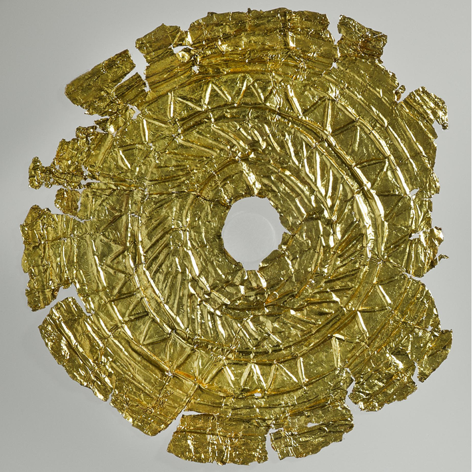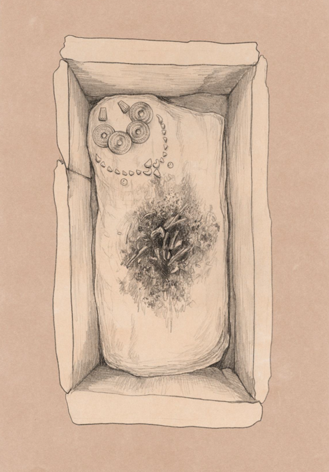
The Finds Hub is a tool for linking digital information about archaeological objects (finds) in Scotland and the places they were discovered (sites). This information is currently located in separate data silos (museum and heritage databases) across Scottish archaeology making it difficult to access and use for professional archaeologists and the wider public. The Finds Hub will bring together for the first time digital records from some of Scotland’s most significant heritage collections.
All of the 42,561 museum objects currently assembled in the Finds Hub came from somewhere in Scotland, but most of them are not yet linked to the archaeological sites where they were found: it is currently not possible to map the origins of these objects. Because different data collectors have used different site names and identification systems and the information held in these records can be incorrect or may have changed since the record was originally created, it can be a challenge to find points of connection between records of finds and their discovery sites. Despite significant recent advances in machine reading it is simply not possible to link these records using computational methods – human effort is required!
Anyone with an interest in Scottish archaeology can use the Finds Hub to search, browse and link digital records about finds and their discovery sites by registering here. Registered Finds Hub users can access additional screens and buttons which allow them to actively link information about museum finds and discovery sites. This information includes textual descriptions as well as some amazing photos of objects and burial sites, antiquarian paintings, and hand-written excavation accounts. New Finds Hub links become hyperlinks which will also become accessible on data providers’ websites and via the Archaeology Data Service (ADS), making the experience of browsing records and using the incredible information within them richer and more productive for everyone. By using the Finds Hub to connect records of finds and their discovery sites permanently, we can build new and better stories about Scottish archaeology and create a vital digital platform for future research.
The Finds Hub needs your help to make connections between records. The Finds Hub is currently part of an AHRC-funded pilot project, running until 30 April 2022. If we work collectively to make enough new links, use this linked information to tell fresh stories about the past, and make an active difference to the working lives of Scottish archaeologists who use this information on a daily basis, there's a chance that the Finds Hub can continue to grow in future!
Do your bit by registering here and making some links! There are helpful videos here.
Boundary Objects Project

The Boundary Objects project (BOP) aims to raise the profile of prehistoric grave goods in Scotland, to improve access to dislocated digital information about grave goods and burial sites, and to create new opportunities for the wider public to help out with research into archaeological finds. BOP is an AHRC-funded collaboration between the Universities of Reading and Manchester in partnership with the National Museum of Scotland and Historic Environment Scotland. The project builds on research undertaken from 2016-2020 on the AHRC-funded Prehistoric Grave Goods Project. You can find out more about both these projects here.
The Prehistoric Grave Goods Project showed that these objects are often both stunning and incredibly moving. Fascinating stories can be told about grave goods themselves, the burial practices associated with them, and the people who found them. Ancient grave goods also allow us to reflect in novel ways upon death and burial in our own settings. However, prehistoric grave goods are not always identified as such in museum displays. Information about grave goods is often hard to access and distributed across multiple data-holdings. This means that the stories of things often get separated from the stories of the people they were buried with and the places in which they were interred. Grave goods research has often focused on spectacular items from rich burial assemblages, overlooking the subtleties and poignancy of simpler offerings. Fascinating tales often lie behind the moment of discovery itself, but these can be quickly lost. Despite the huge importance of grave goods in understanding our prehistoric past, there have few opportunities up until now for volunteers to actively help out with grave goods research.
BOP has built the Finds Hub in order to help researchers, professionals and the wider public link a wide spectrum of digital information about grave goods and burial sites and to generate new grave goods interpretations. We very much hope that community groups and researchers across archaeology will help to populate the Finds Hub, to create richer information – images and written details – about prehistoric grave goods in Scotland, and to create new grave goods stories which will be showcased on HES’s Canmore webpage and in a series of pop-up exhibitions. BOP volunteer opportunities will be advertised on NMS and BOP blogs and via regional community group newsletters. From September 2021 to April 2022, we will hold a monthly online ‘Ancient Death Café’ on the first Wednesday of every month at 7pm to share and develop ideas for grave goods research.
Prehistoric burials in Scotland

There is a rich history of research into prehistoric burials in Scotland spanning a period of at least 150 years. However, Scottish prehistoric burials generally remain less well known than their southern British counterparts, and some Scottish regions, periods of prehistory and types of grave good are much better represented than others.
Scottish prehistoric grave goods can be glamorous, thought-provoking, humble and incredibly personal in equal measure. Poet, Micheal Rosen and artists, Kelvin Wilson and Craig Williams, captured the magic and intrigue of the Early Bronze Age cist burial at Knowes of Trotty, Orkney in specially commissioned pieces for the Prehistoric Grave Goods Project. Other favourite examples we encountered during work on Prehistoric Grave Goods Project include the necklaces of limpet shells and polished orca teeth that accompanied Neolithic chambered tomb burials at Isbister and Point of Cott, Orkney, the brown cattle hide that wrapped the tightly flexed skeleton of a young woman at Langwell Farm, Strath Oykel, Highlands, and the fine iron belt buckle found at the pelvis of a middle-aged man with a spinal deformity in a cist burial at Swainbost, Lewis.
